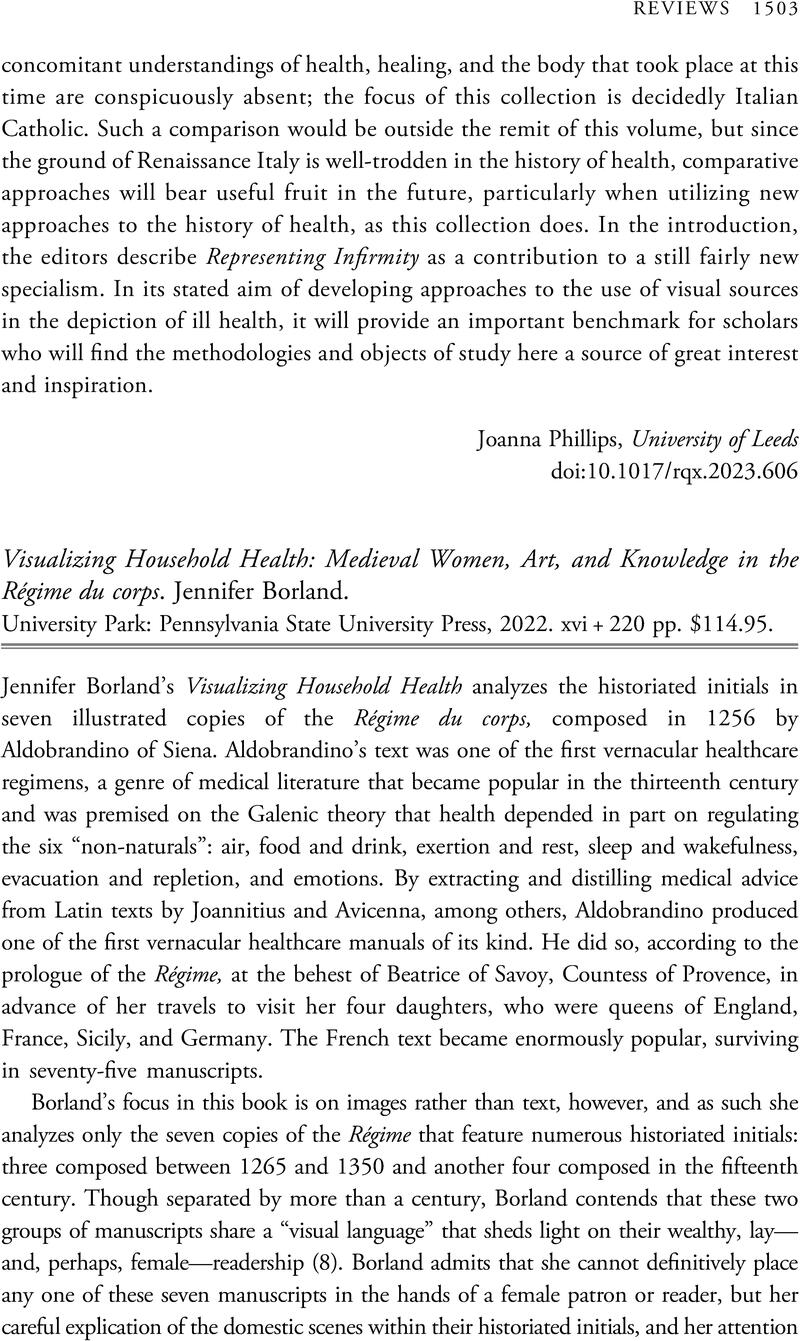No CrossRef data available.
Article contents
Visualizing Household Health: Medieval Women, Art, and Knowledge in the Régime du corps. Jennifer Borland. University Park: Pennsylvania State University Press, 2022. xvi + 220 pp. $114.95.
Review products
Visualizing Household Health: Medieval Women, Art, and Knowledge in the Régime du corps. Jennifer Borland. University Park: Pennsylvania State University Press, 2022. xvi + 220 pp. $114.95.
Published online by Cambridge University Press: 24 January 2024
Abstract
An abstract is not available for this content so a preview has been provided. Please use the Get access link above for information on how to access this content.

- Type
- Review
- Information
- Copyright
- Copyright © The Author(s), 2024. Published by Cambridge University Press on behalf of the Renaissance Society of America



